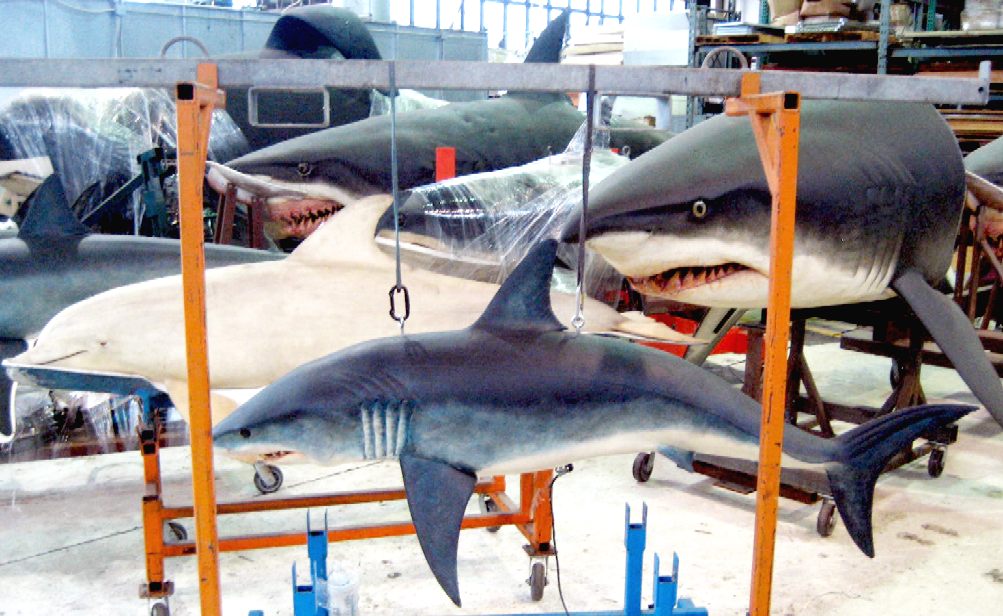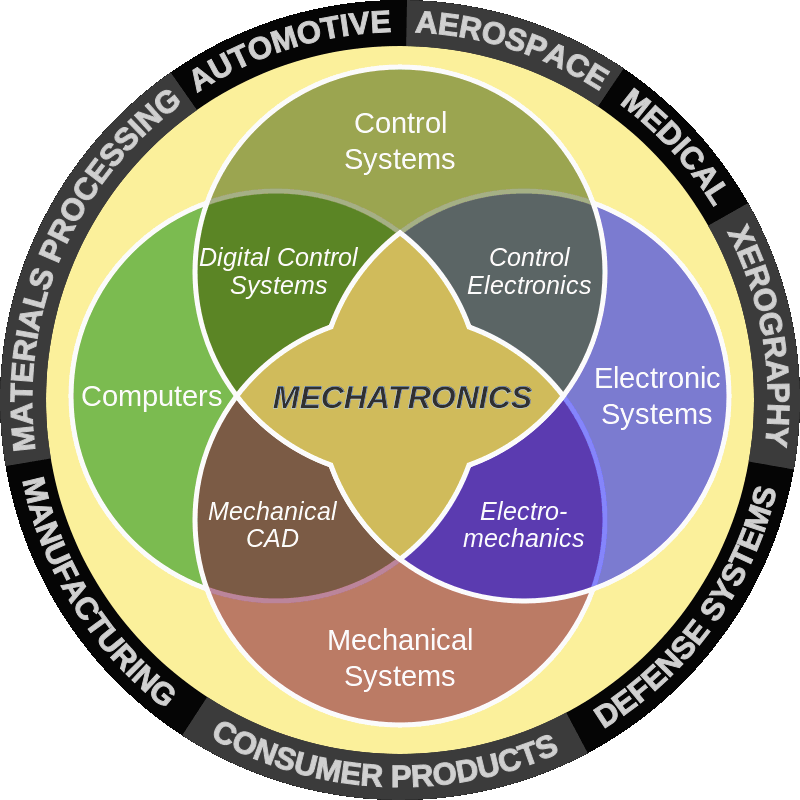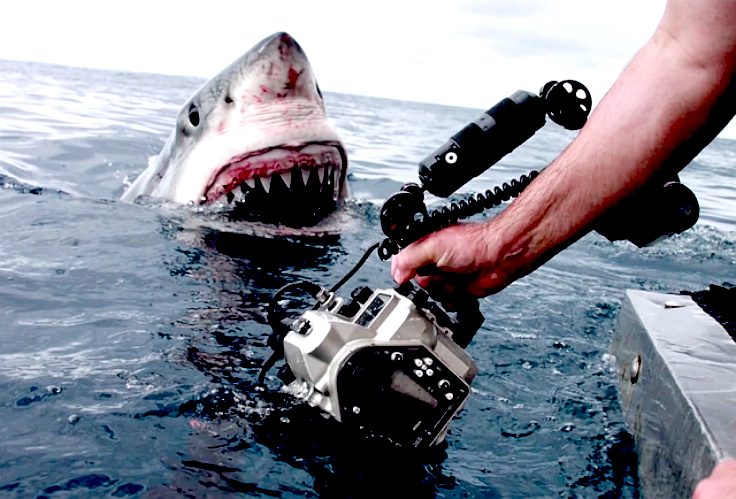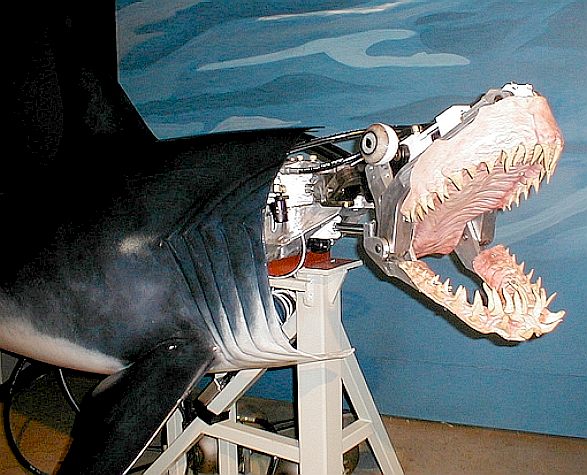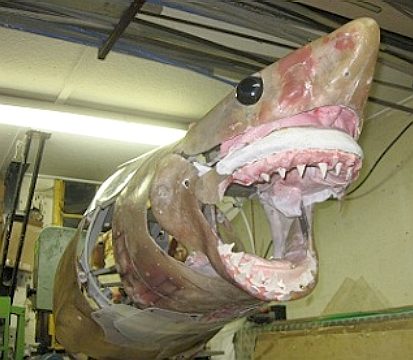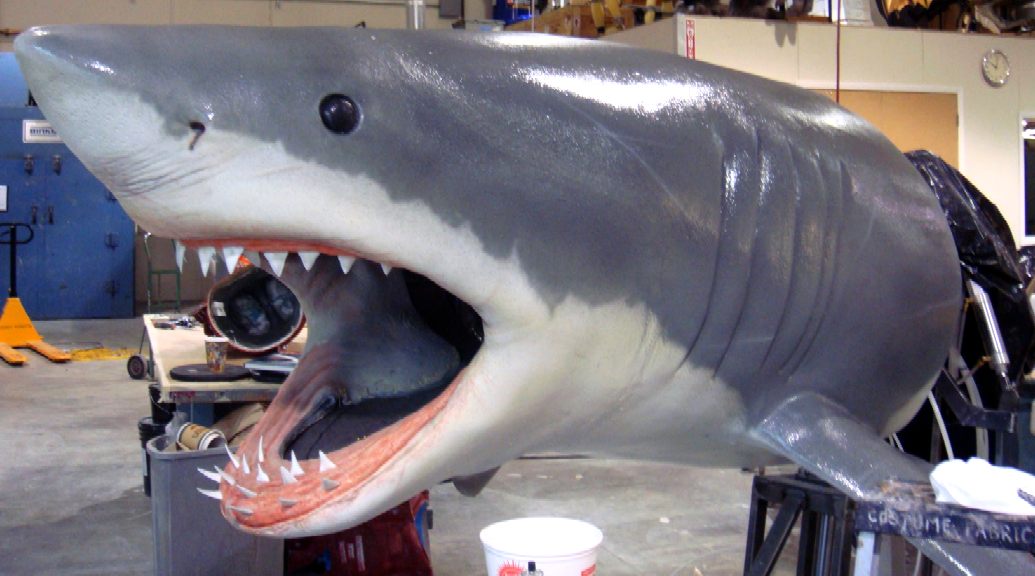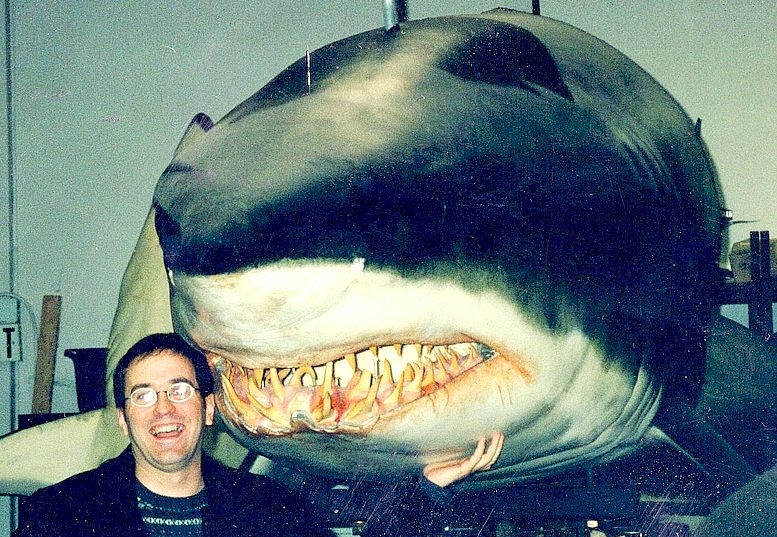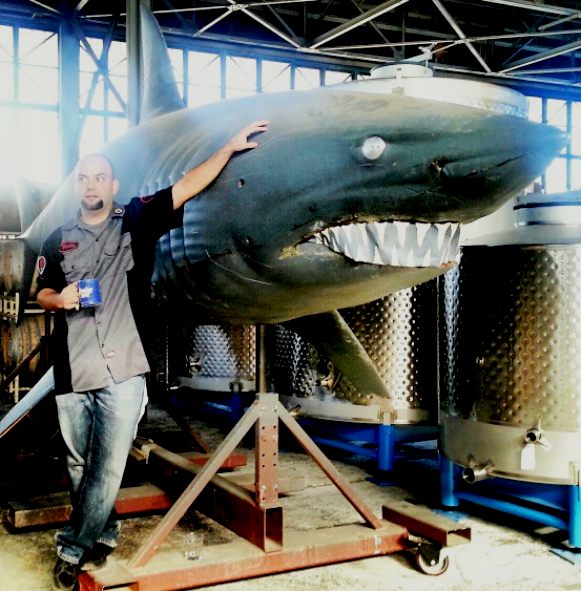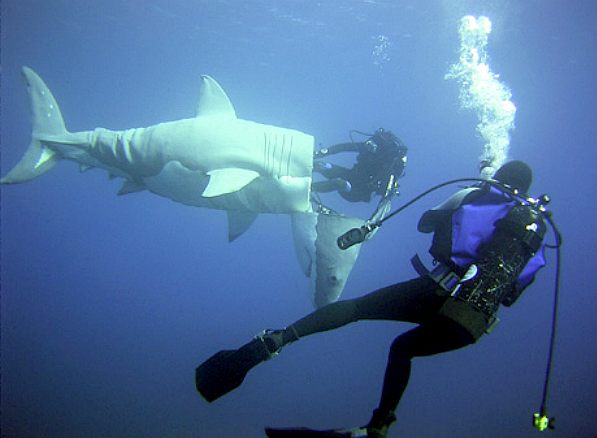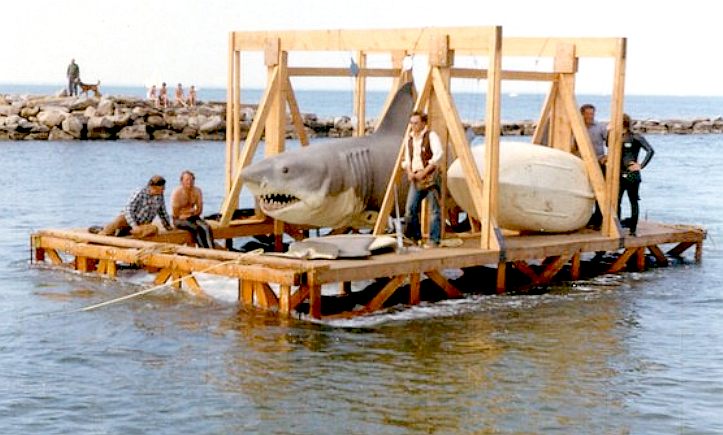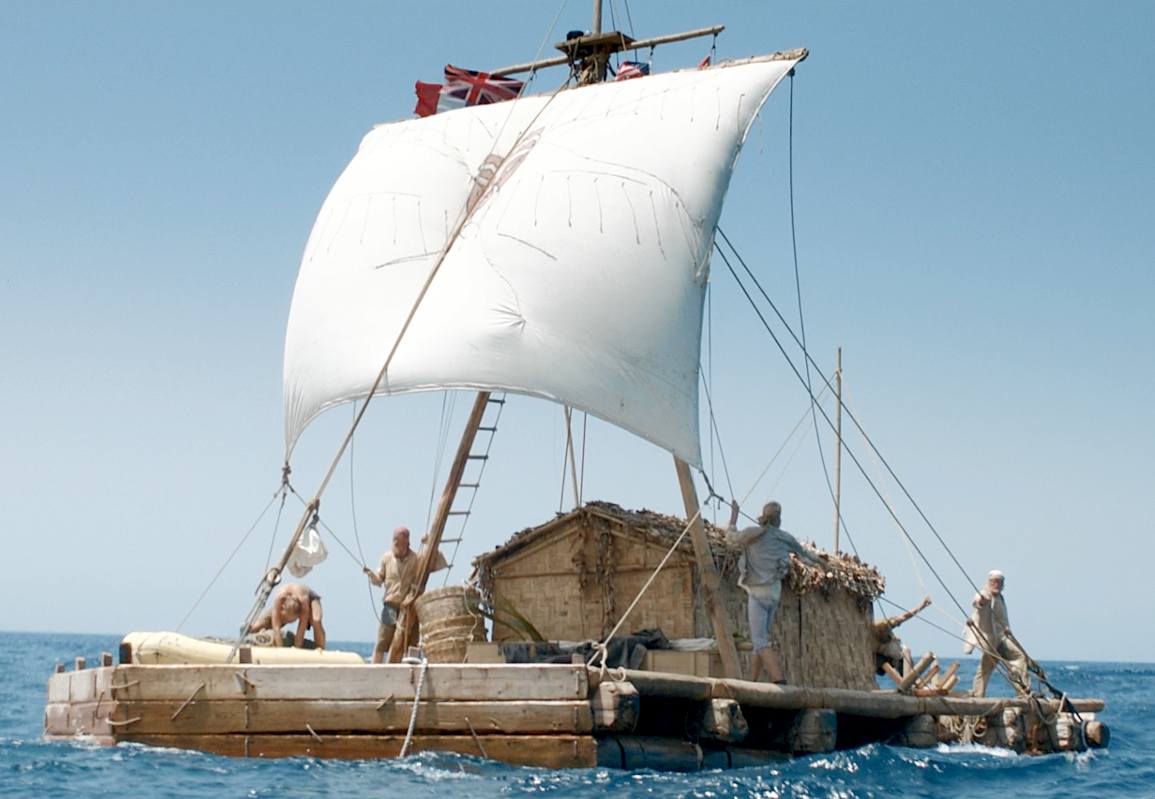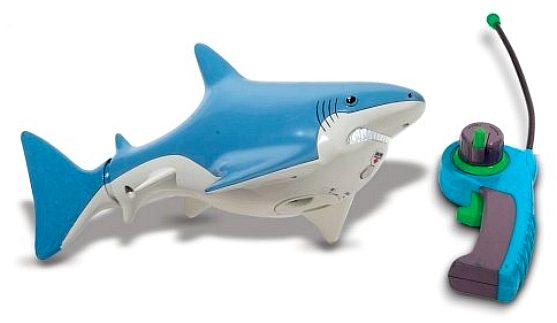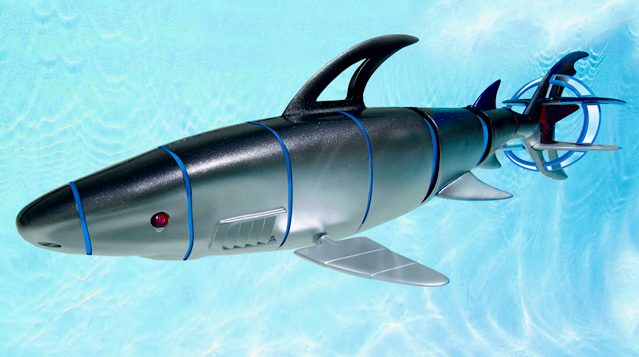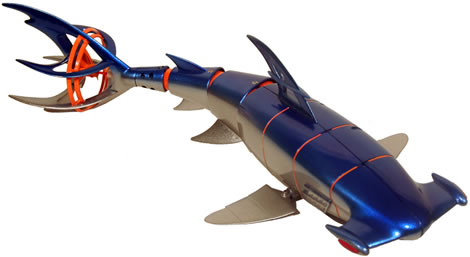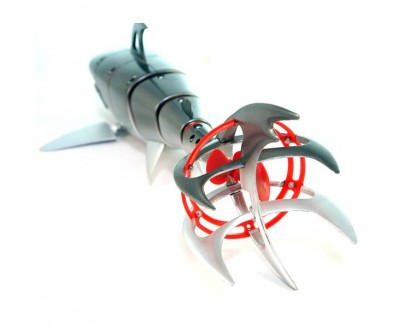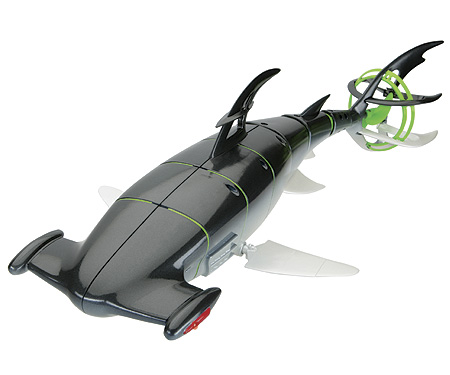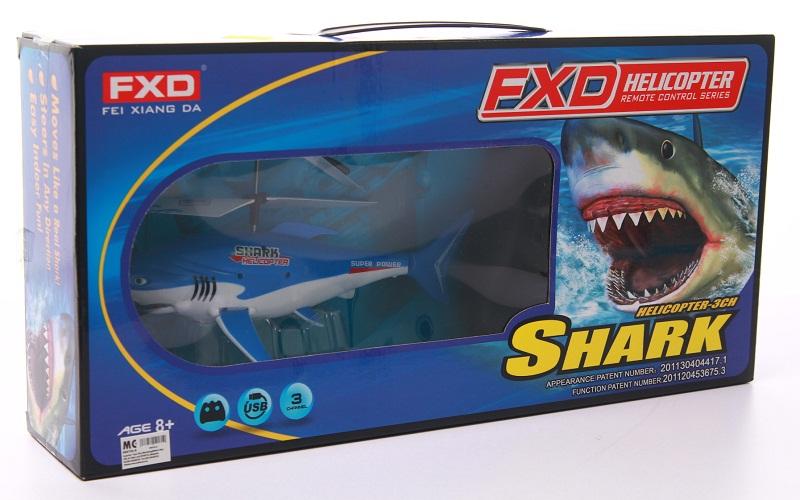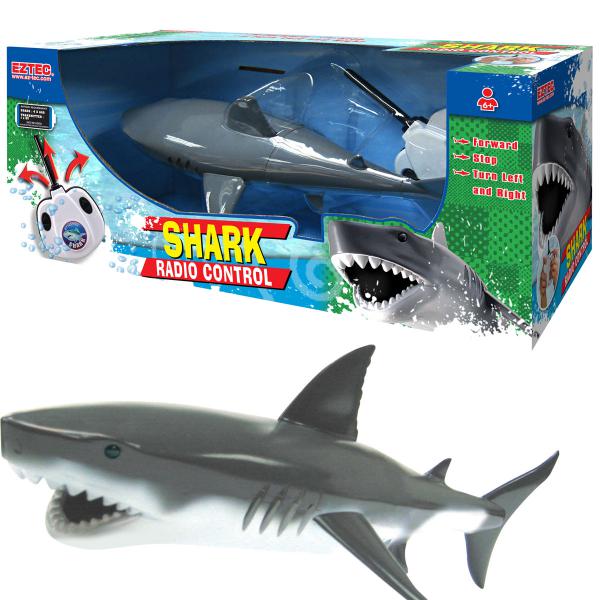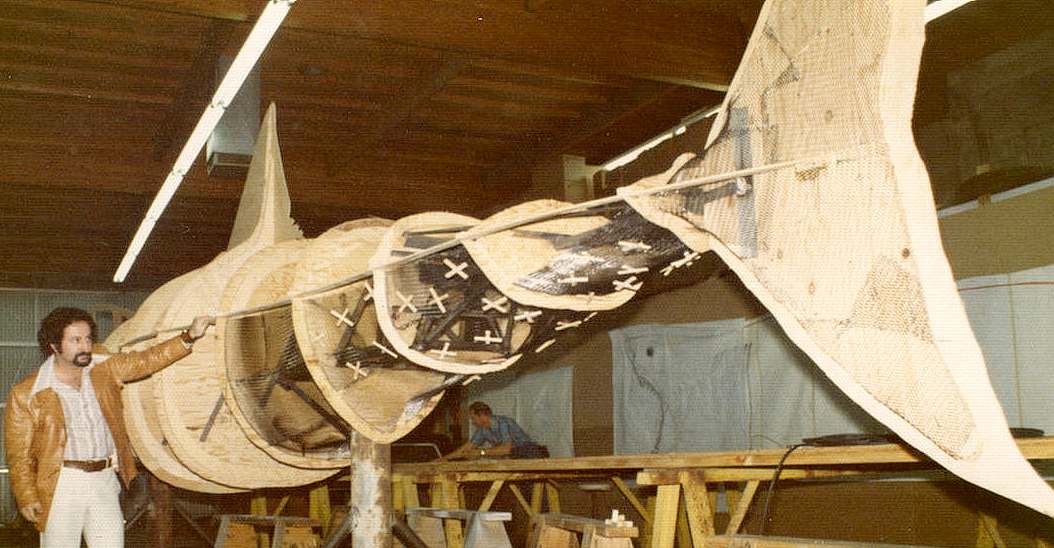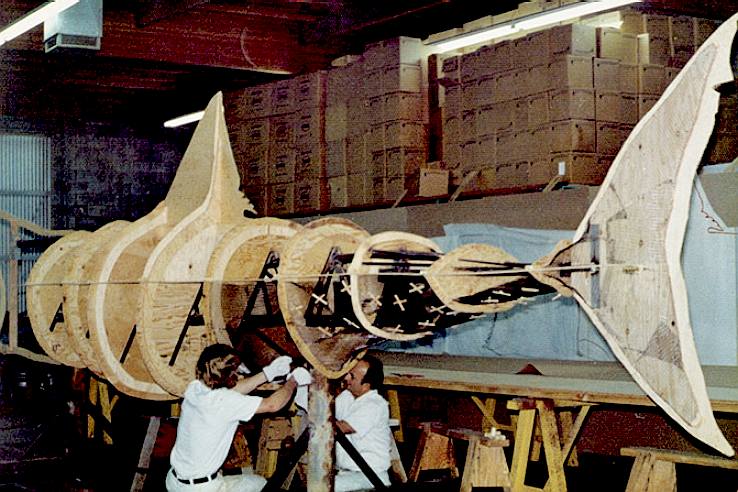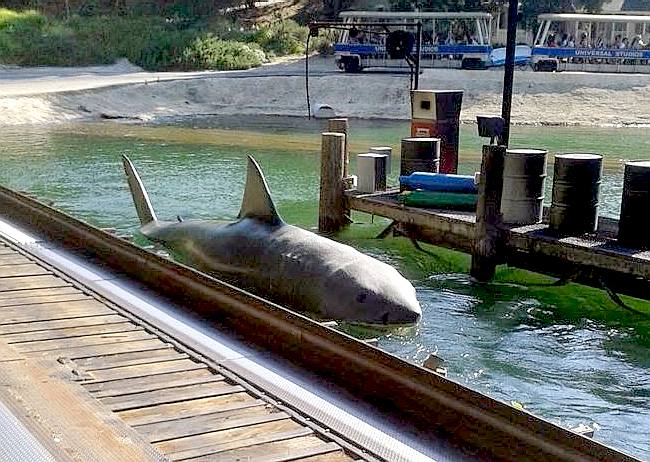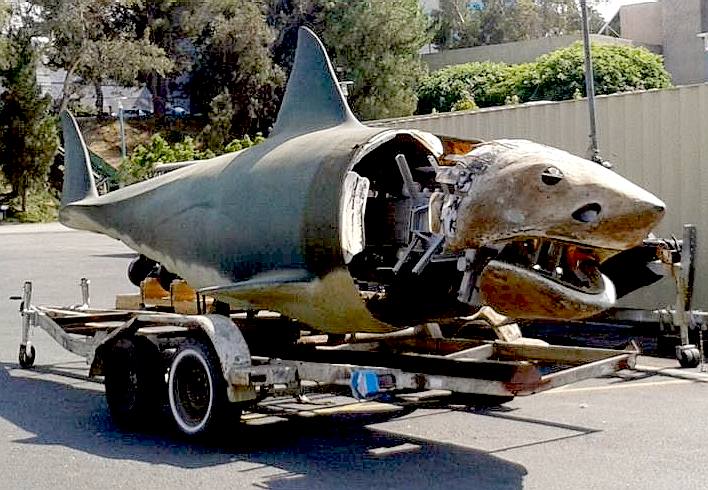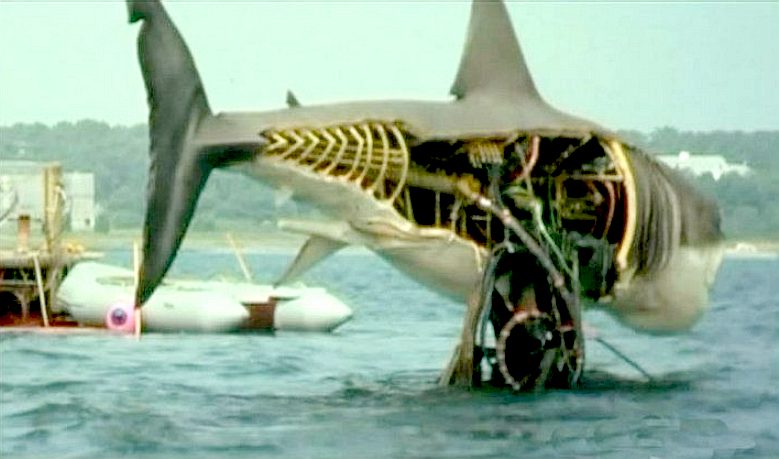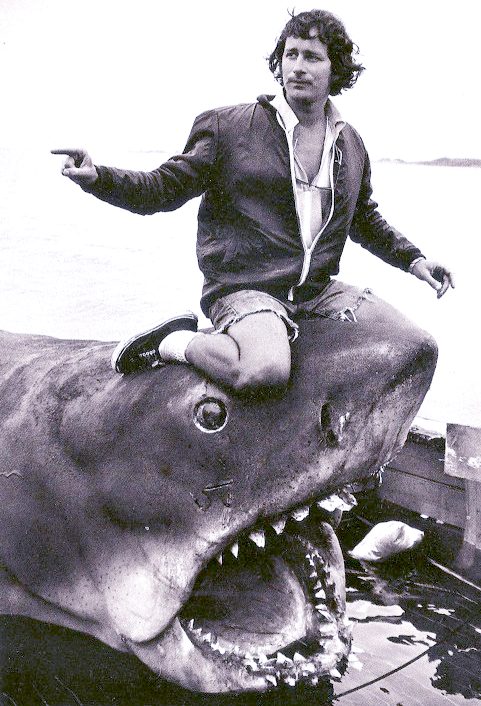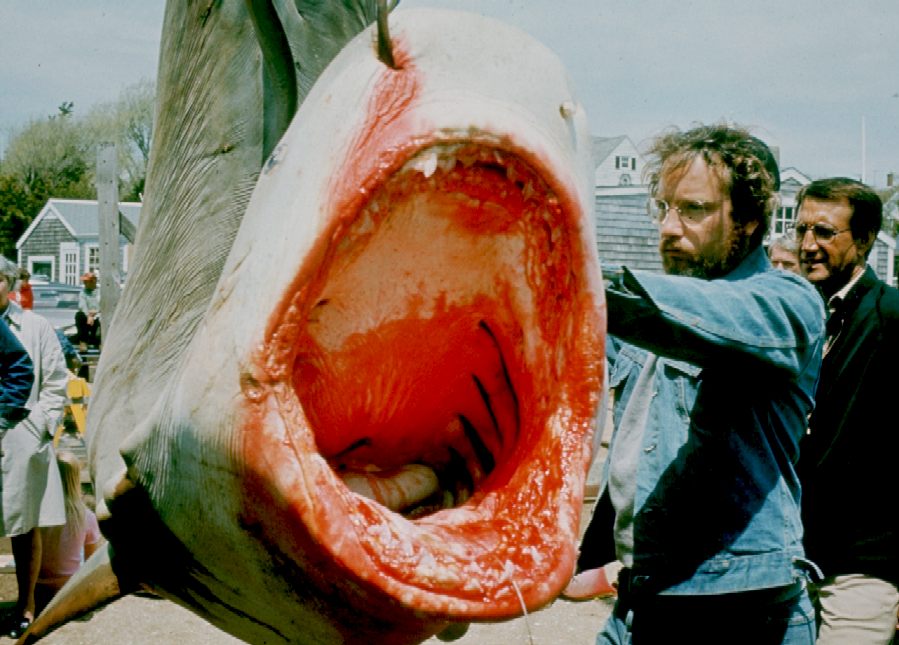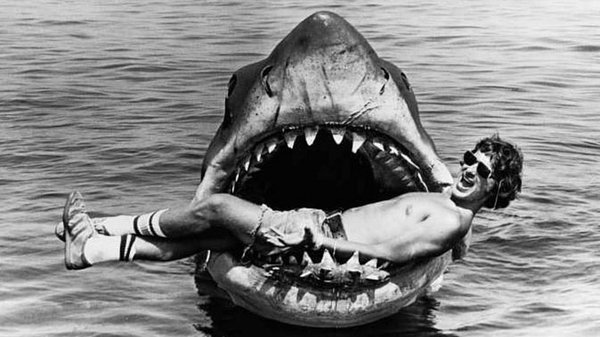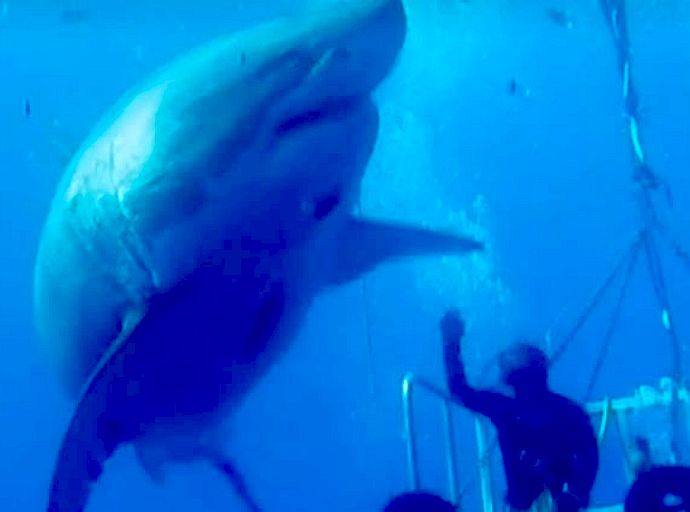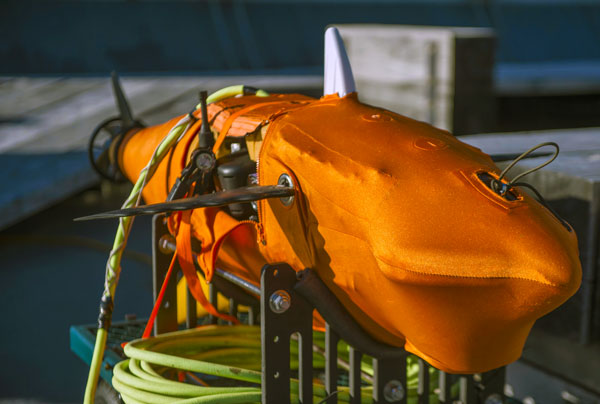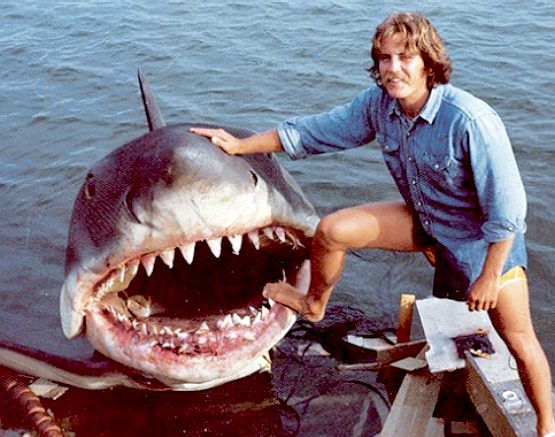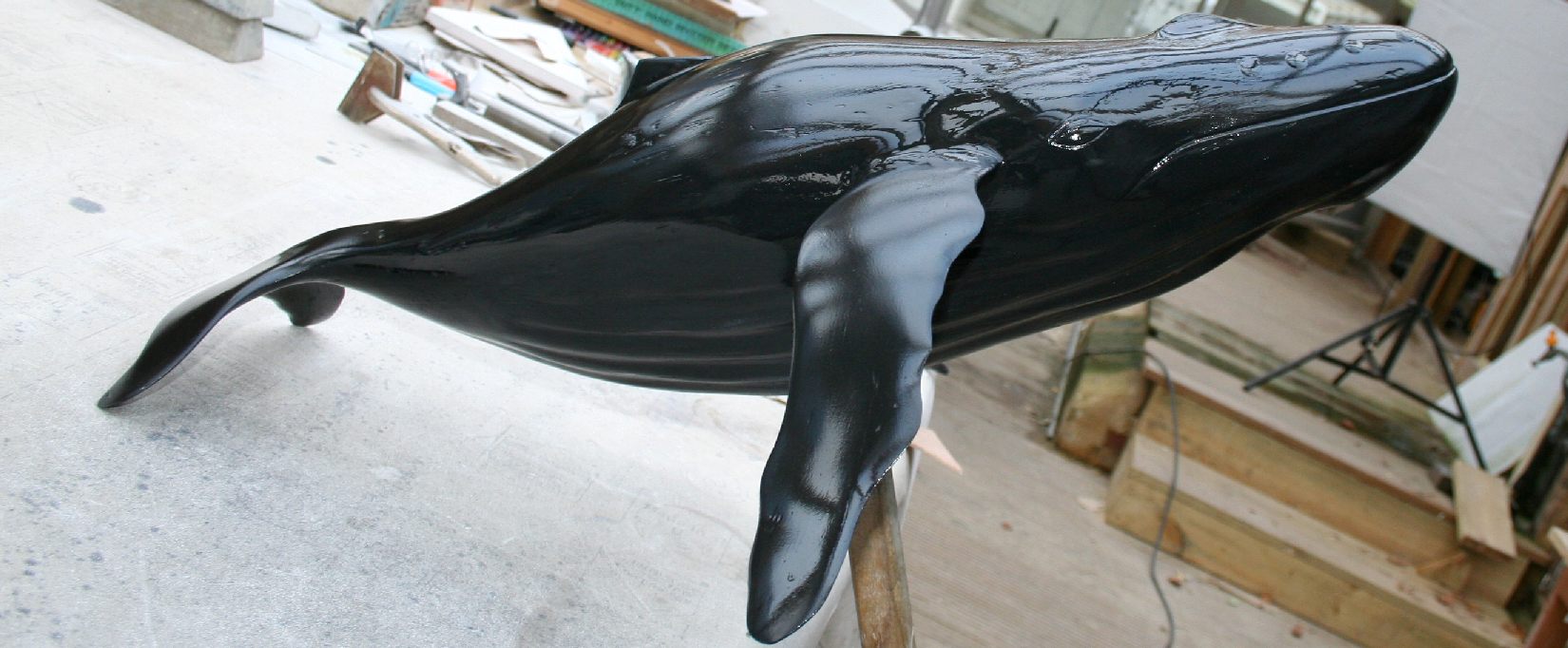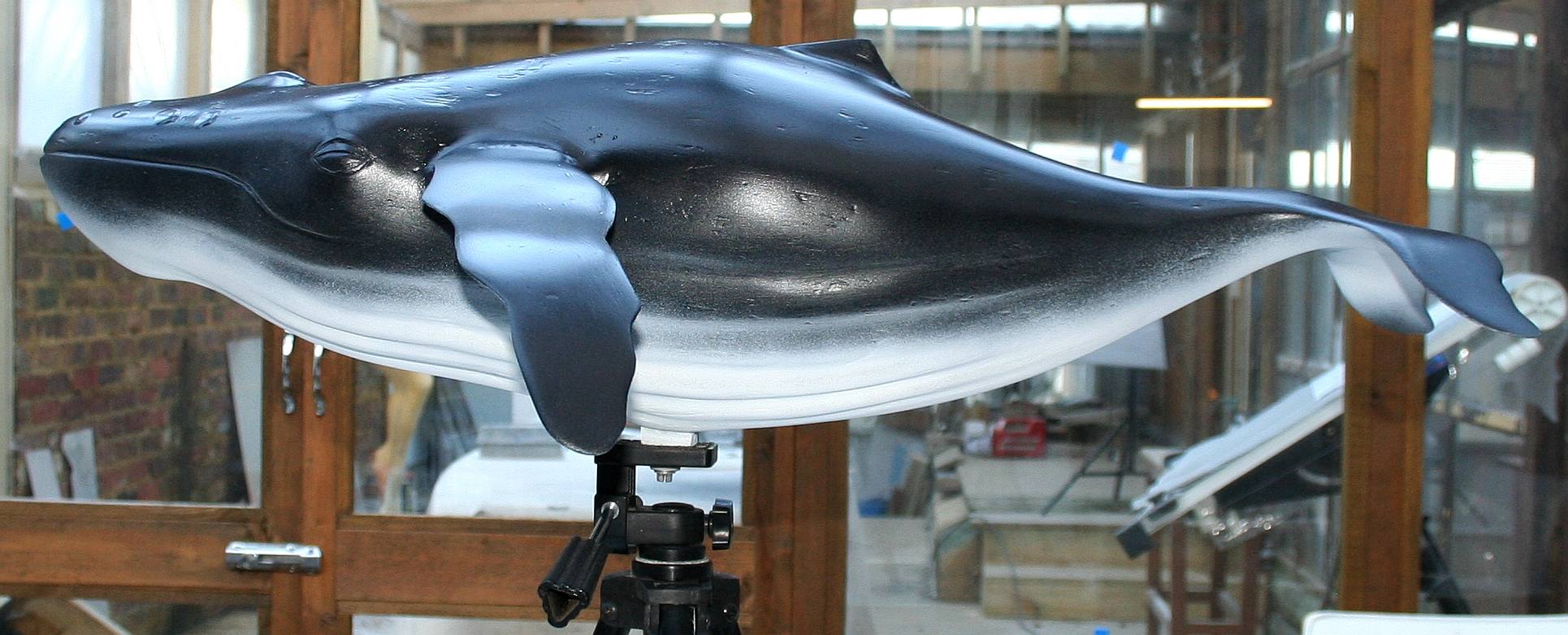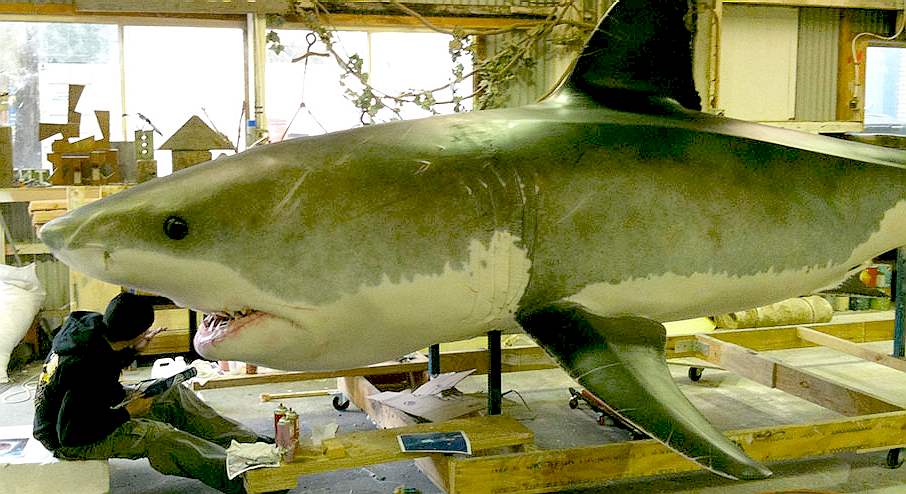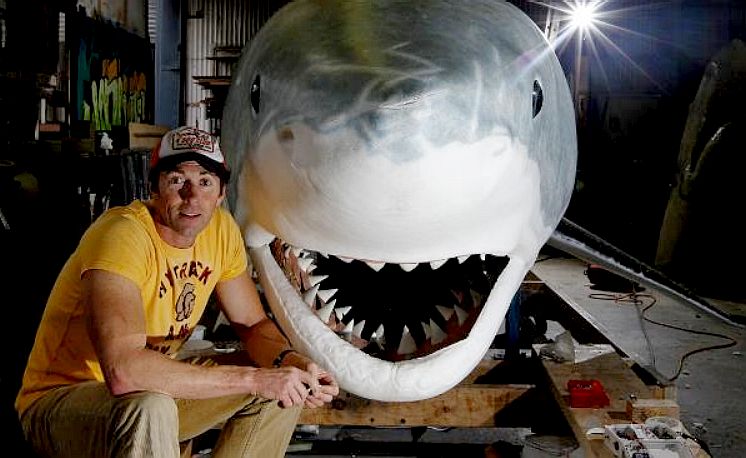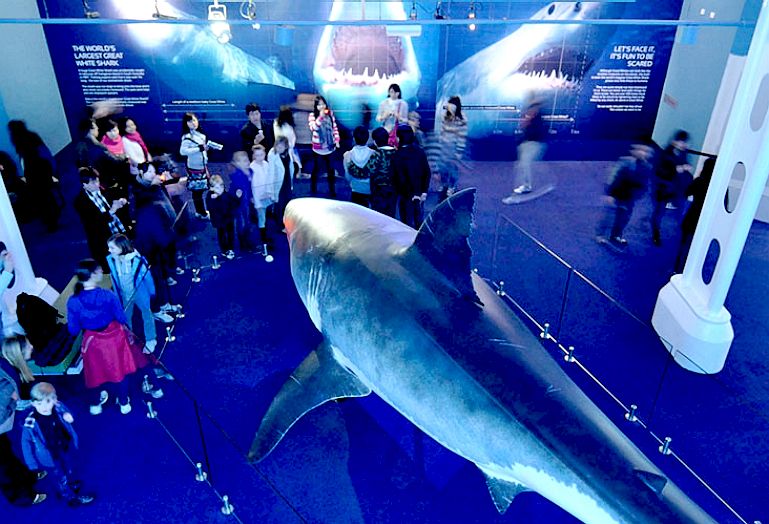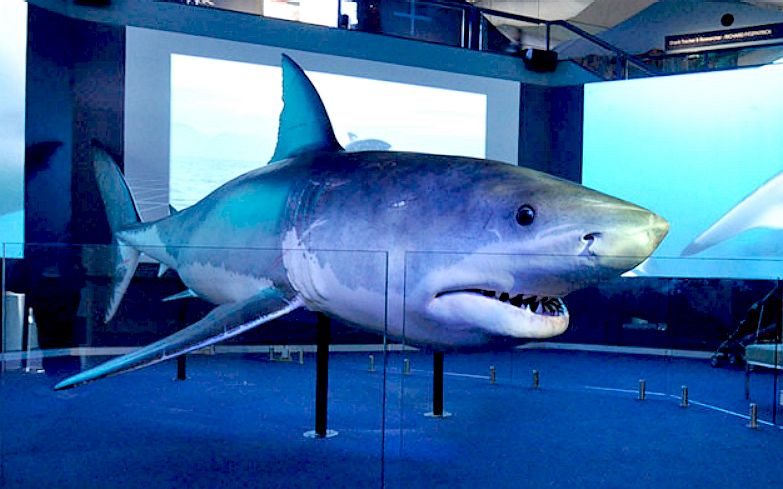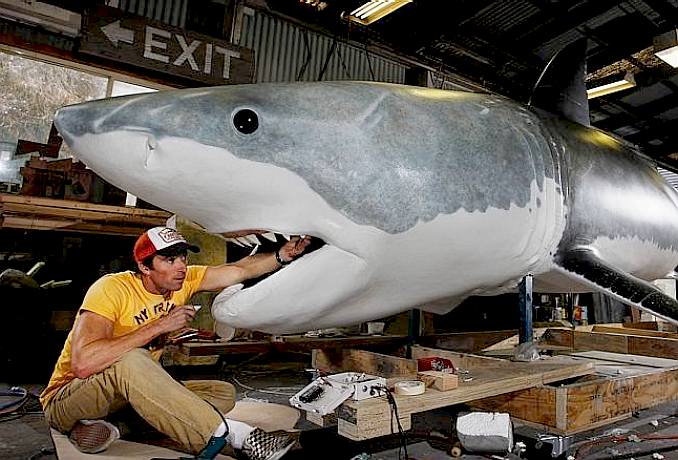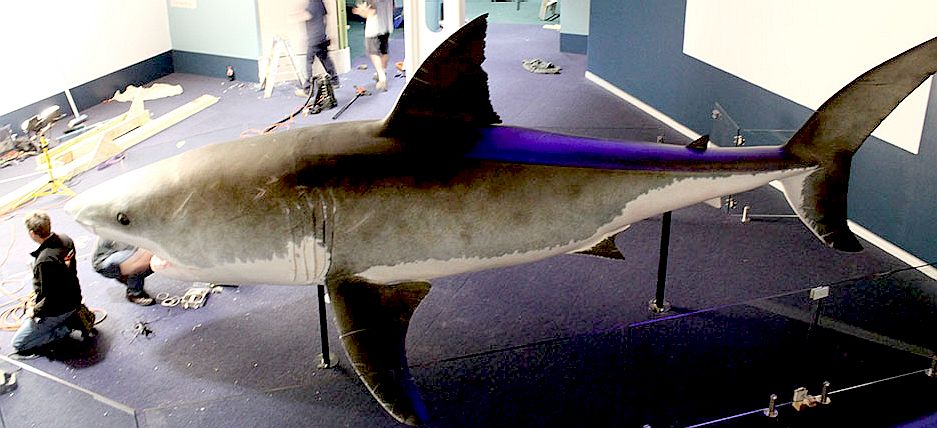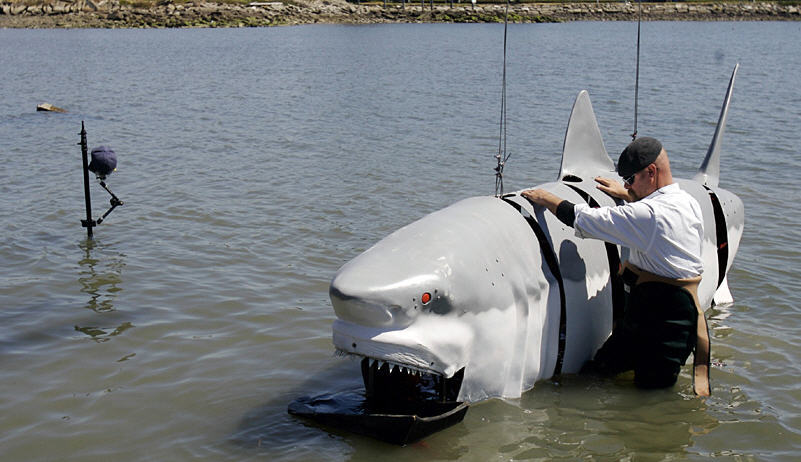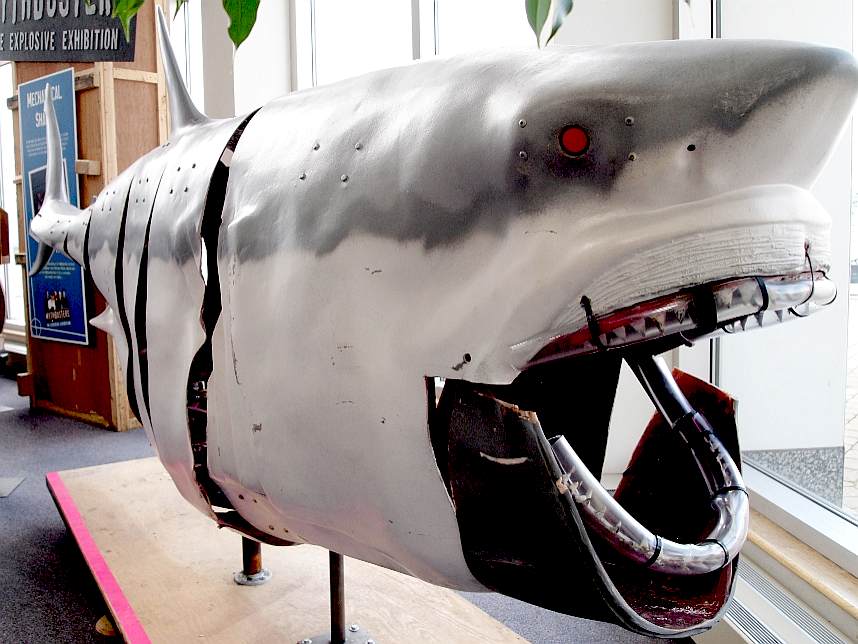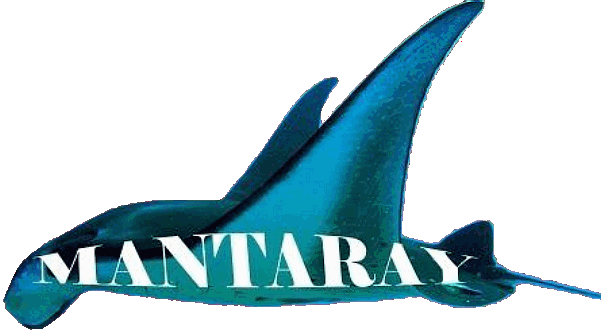|
SHARKS - ANIMATRONICS
|
||||||
|
A collection of shark and other marine animatronic artworks, typically used by film studios and television documentary makers.
The sea is full of extraordinary creatures – and now because of man's lust for knowledge we have added to the wonderful variety by including lifelike robots. Some marine robots are used to film the private lives of dolphins for TV, others to shock us with horror stories about shark attacks. But don't forget that shark numbers are declining due to human intervention.
The greatest threat to shark numbers are climate change, tourism, pollution from oil spills, and the ingestion of micro-plastics. That is something for the Global Ocean Commission to ponder. Here we are looking at small submersible models that imitate the actions of sharks. They are usually radio-controlled and can be equipped with HD cameras to capture footage of unsuspecting marine mammals, or simply to allow the operators to see where their vehicle is going. Deep diving mini-submarines are used to survey the oceans, used by such organizations as the National Environment Research Council (NERC) and the National Oceanography Centre (NOC).
One reason that sharks are so popular as the subject is that the large fish is so beautifully streamlined and has a fearsome reputation. Film makers flock to the subject for these reasons, made famous by the blockbuster movie, Jaws, and followed up with less successful films such as The Deep Blue Sea that relied on computer graphics - and that is where things can start to go wrong - in relying on unbelievable comic hero type animation, rather than a good story. The Deep Blue Sea is more of a science fiction movie where sharks become more intelligent. Despite lacking the classic quality and feel of Jaws, it is an entertaining movie. Sharks are of course cunning hunters already.
ANIMATRONICS
Animatronics refers to the use of robotic devices to emulate a human or an animal, or bring lifelike characteristics to an otherwise inanimate object. Animatronic creations include animals (including dinosaurs), plants and even mythical creatures. A robot designed to be a convincing imitation of a
human is more specifically labeled as an android. Modern animatronics have found widespread applications in movie special effects and theme parks and have, since their inception, been primarily used as a spectacle of amusement.
ANIMATRONICS DESIGN
An animatronics character is built around an internal supporting frame, usually made of steel. Attached to these "bones" are the "muscles" which can be manufactured using elastic netting composed of styrene
beads. The frame provides the support for the electronics and mechanical components, as well as providing the shape for the outer skin.
Structure
An animatronics character is typically designed to be as realistic as possible and thus, is built similarly to how it would be in real life. The framework of the figure is like the "skeleton". Joints, motors, and actuators act as the "muscles". Connecting all the electrical components together are wires, such as the "nervous system" of a real animal or person.
Frame or skeleton
Steel,
aluminum, plastic, and
wood are all commonly used in building animatronics but each has its best purpose. The relative strength as well as the weight of the material itself should be considered when determining the most appropriate material to use. The cost of the material may also be a concern.
Latex
Foam latex is a lightweight, soft form of latex which is used in masks and facial prosthetics to change a person's outward appearance, and in animatronics to create a realistic "skin". The Wizard of Oz was one of the first films to make extensive use of foam latex prosthetics in the 1930s.
Silicone
Disney has a research team devoted to improving and developing better methods of creating more lifelike animatronics exteriors with silicone.
RTV silicone (room temperature vulcanization silicone) is used primarily as a molding material as it is very easy to use but is relatively expensive. Few other materials stick to it, making molds easy to separate.
Polyurethane
Plaster
Movement
The floating rig or raft from which 'Bruce,' one of the animatronic sharks used to make the Jaws movie was launched and recovered. One of the most famous rafts in history was that used by Thor Heyerdahl for his Kontiki expedition in 1947. Thor was born in 1914 and celebrated his 100th birthday on the 6th of October 2014. The Kontiki raft covered 4,300 nautical miles in 101 days at an average speed of 42.5 miles per day.
ANIMATRONIC MODEL SHARKS
The good the bad and the ugly: Some of the model sharks that you can buy are superbly designed, others less so, but it all depends on the age group that the toys are aimed at. There is no point making a toy for a 5 year old that is as sophisticated as one of the high end model 'U' Boat submarines, many of which are used for wargaming and even have working torpedoes.
The above is a small selection of the vast number of radio controlled model sharks.
Anyone who has a passing interest in
the Jaws movie knows that the animatronic shark kept breaking down. This
turned out to be a blessing in disguise, because Steven Spielberg had to add more character development and depth to the
script to build tension. Not though a great beginning for marine
animatronics.
BRUCE - was built with plywood formers as you can see, mated to steel frames wherever there is a hinge for movement. We are not sure if any of the Jaws sharks were designed to emulate a real swimming stroke authentically, but if we were making a shark, we'd be sure to study a real fish and replicate that movement. Nature has already done the design work for you. The first port of call is the cartilaginous backbone, then the muscles. An exoskeleton arrangement with flexible skin over the sections would be just too stiff. You'd be better off with a backbone and a soft polyurethane foam former (or foam latex sandwich), onto which is stretched a flexible skin. Then if the robot mechanism (muscles) has the same degree of movement as the real fish, it will move and even swim like the real thing. Imagine if you will a scuba diver's flipper. The blade is flexible, a human foot is relatively inflexible. It is the flexibility of the flipper blade (fin) multiplied by the area that allows a scuba diver to swim so fast, converting to-and-fro into thrust efficiently. Fish rely on the same principle.
When Jaws was first set up at Universal, the book by Peter Benchley was still in galleys, and the biggest names attached to it were producers David Brown and Richard Zanuck. The first person onboard to work on Jaws was art director Joe Alves. Once Bob Mattey had confirmed to Joe Alves that the shark could be made, he was given the green light to get to work.
In January of 1974, Jaws the novel was published and it was a best-seller, somewhat accelerating the film. Hence, Universal Pictures decreed the movie had to be shot that summer, which gave Mattey no time to perfect his mechanical monster-piece.
The animatronic shark in Jaws showed how effective a
robotic special effect could be. While the stories of it malfunctioning are legendary, it is completely believable and terrifying
onscreen - for the its time. The climax, where the shark and Roy Schieder battle to the death, is utterly dependent on the creature's effectiveness and
though it had a relatively stiff or restricted movement, it delivers. While
Steven Spielberg hid the shark until the climax, Bob Mattey's monster lives up to the film's build-up by being as scary as we
potential audiences were told it would be - up to that point.
DAILY EXPRESS JUNE 2015
The more than 20 feet (nearly 7m) long sea beast was filmed by cage divers in Mexico.
The sheer scale of the monster fish is jaw dropping when seen next to the divers.
MECHATRONICS
Mechatronics is a multidisciplinary field of engineering that includes a combination of mechanical engineering, electrical engineering, telecommunications engineering, control engineering and
computer engineering. As technology advances the subfields of engineering multiply and adapt. Mechatronics' aim is a design process that unifies these subfields. Originally, mechatronics just included the combination of mechanics and electronics, hence the word is a combination of mechanics and electronics; however, as technical systems have become more and more complex the word has been broadened to include more technical areas.
A mechatronics engineer unites the principles of mechanics, electronics, and computing to generate a simpler, more economical and reliable system. The term "mechatronics" was coined by Tetsuro Mori, the senior engineer of the
Japanese company Yaskawa in 1969. An industrial robot is a prime example of a mechatronics system; it includes aspects of electronics, mechanics, and computing to do its day-to-day jobs.
HUMPBACK - This is a 1/20th scale model of Kulo Luna, a humpback whale for use in displays with the SeaVax and Elizabeth Swan tank test models. She is made of fibreglass, 760mm (30") long and will float in water at the correct displacement. Seen here in a basecoat for final grey and white primer coats before detailing. The skills needed to make such models quickly might be needed for larger exhibits in connection with the Cleaner Ocean Foundation's awareness campaigns. Imagine a full size humpback whale or even a megalodon. Copyright © Jameson Hunter December 22 2018.
MOUNTED - Most of our models are fitted to revolving displays where the stand is motorised. This humpback whale model is fixed to a modified camera tripod for static showing. The detailing of this artwork is to follow the Refill event in Eastbourne on January the 26th 2019. Copyright © Jameson Hunter December 24 2018.
CONSERVATION
USAGE
SYDNEY HARBOUR AQUARIUM
Sea Life Sydney Aquarium (formerly Sydney Aquarium) is a public aquarium located in the city of Sydney, New South Wales, Australia. It is located on the eastern (city) side of Darling Harbour to the north of the Pyrmont Bridge. It is a full institutional member of the Zoo and Aquarium Association (ZAA) and the World Association of Zoos and Aquariums (WAZA).
The Sydney Aquarium has distinctly Australian themes and exhibits, which take visitors through the continent's waterways and marine ecosystems. Exhibits cover the rivers of Australia, exploring the Southern and Northern River habitats, as well as the oceans of Australia, through the Southern and Northern Ocean habitats. The complex and fragile nature of Australia's very different and unique aquatic environments is
emphasized.
DAILY TELEGRAPH JULY 2010
SEA LIFE
SYDNEY AQUARIUM
Tel:
1-800-199-657 Sydney Aquarium Company Pty Ltd,
is part of the Merlin Entertainments Group
LINKS & REFERENCE
Tested movies robot shark technology Jaws The power armor cyoa wiki Swarm_Manta-Ray Geeky Gadgets underwater robot swims like a manta ray 27-07-2012 Wired news archive 2012 July Mantabot Evologics subsea glider Aquaray manta robot Wikipedia list_of_threatened_rays Studio Florian projekty Maslovskiy Oleg ocean robotic cleaning system DailyMail-UK-news flying-giants-Incredibly-rare-display-manta-rays-leap-3ft-water-air mantawatch 2012 may the-amazing-jumping-mobulas-of-the-sea-of-cortez BBC earth story 2015 watch these giant rays fly Wikipedia Scripps_Institution_of_Oceanography History news Thor Heyerdahl's Kon-tiki voyage Smithsonian institution how-voyage-kon-tiki-misled-world-about-navigating-pacific https://en.wikipedia.org/wiki/Animatronics Instructables Simple Animatronics Robotic Hand mirror news-science-technology-fancy-robotic-pet-check-out Tested art maker faire 2013 roy animatronic robot Express UK Jaws-Megalodon-world-s-biggest-Great-White-Shark-cage-diving-Mexico-filmed-giant Daily Telegraph Australia news maneater shark terrifies even out of water Wikipedia Sea_Life_Sydney_Aquarium Sydney Darling harbour attractions aquarium CFX workshop portfolio sydney aquarium shark http://www.cfxworkshop.com/portfolio/sydney-aquarium-shark/ http://www.dailytelegraph.com.au/news/nsw/maneater-shark-terrifies-even-out-of-water/story-e6freuzi-1225890016332 https://en.wikipedia.org/wiki/Sea_Life_Sydney_Aquarium http://www.sydney.com/destinations/sydney/sydney-city/darling-harbour/attractions/sydney-aquarium http://www.tested.com/art/makers/455620-maker-faire-2013-roy-animatronic-robot/ https://en.wikipedia.org/wiki/Mechatronics https://en.wikipedia.org/wiki/Animatronics http://www.instructables.com/id/Simple-Animatronics-robotic-hand/ http://www.robots.nu/robot-animals/ http://www.mirror.co.uk/news/technology-science/technology/fancy-robotic-pet-check-out-4303902 http://www.huffingtonpost.com/2014/02/10/robot-animals_n_4733672.html http://www.history.com/news/thor-heyerdahls-kon-tiki-voyage http://www.smithsonianmag.com/smithsonian-institution/how-voyage-kon-tiki-misled-world-about-navigating-pacific-180952478/ http://www.kon-tiki.no/en/E-Exp_KonTiki.php http://www.tested.com/art/movies/456576-robot-shark-technology-jaws/ http://www.bbc.com/earth/story/20150512-watch-these-giant-rays-fly http://www.dailymail.co.uk/news/article-1298362/Flying-giants-Incredibly-rare-display-manta-rays-leap-3ft-water-air.html http://the-power-armor-cyoa.wikia.com/wiki/File:Swarm_Manta-Ray.jpg http://www.studioflorian.com/projekty/266-maslovskiy-oleg-ocean-robotic-cleaning-system http://en.wikipedia.org/wiki/List_of_threatened_rays http://www.evologics.de/en/products/glider/index.html http://www.wired.co.uk/news/archive/2012-07/25/mantabot http://www.geeky-gadgets.com/underwater-robot-swims-like-a-manta-ray-27-07-2012/ http://www.knbefxgroup.com/
A heartwarming adventure: pirate whalers V conservationists with a $Billion dollars riding on the conclusion.
ACIDIFICATION - ADRIATIC - ARCTIC - ATLANTIC - BALTIC - BERING - CARIBBEAN - CORAL - EAST CHINA ENGLISH CH - GOC - GULF MEXICO - INDIAN - IRC - MEDITERRANEAN - NORTH SEA - PACIFIC - PERSIAN GULF - SEA JAPAN STH
CHINA - PLASTIC
- PLANKTON - PLASTIC
OCEANS - SEA
LEVEL RISE - UNCLOS
- UNEP
WOC
- WWF
NOT BRUCE - a model shark built like this hasn't got a hope in hell of achieving a realistic movement. There is little point trying to make a submersible look like a shark (even superficially) if it prevents the machine from working efficiently as a vessel. The only useful thing on this model is to demonstrate the bite - or maybe the swimming action. But even then, a shark's jaws are rather more complex. We bet they had a whole lot of fun making it and putting it in the water for whatever tests they were running.
|
||||||
|
This website is Copyright © 2021 Bluebird Marine Systems Limited. The names Bluebird™, Bluefish™, Miss Ocean™, SeaNet™, SeaVax™ and the manta ray fish logo are trademarks. All other trademarks are hereby acknowledged.
|
